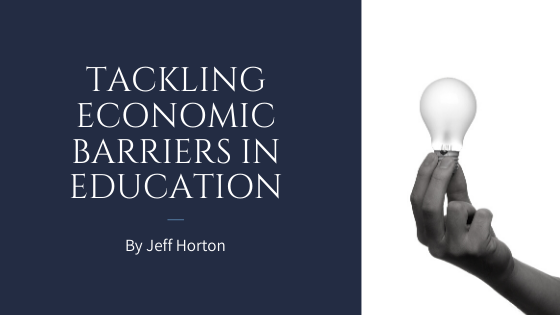It is well-agreed upon that economic barriers impact all aspects of children’s’ lives, including the way they learn. Many economic factors influence how well an education a child receives, such as parental income, residing school district, parental involvement, etc.
Children born into a wealthy family will likely live in a good neighborhood and go to a school with a stronger curriculum and more involved, and higher-paid teachers. Children from a wealthy family may even attend a private school where even more focus is given to each student. The advantages of wealth don’t stop there: there’s also the advantage of a stay-at-home parent, as wealthy families don’t typically require both parents to be out of the home, and if they did, wealthy parents could pay for childcare, tutoring, and more. Students from wealthy families are also guaranteed to have all the supplies they could need. Children from less fortunate families, on the other hand, may suffer in all of these categories: a weak school system, underpaid and overworked teachers, no parental guidance at home, lack of supplies, lack of parental involvement, lack of tutoring, etc.
In one example, the Georgia Budget and Policy Institute published a survey in 2016 that provides further proof of the correlation between high-poverty areas and the school grades of that area. The study showed that in schools where at least half of students come from low-income families are most likely to receive a D or F grade from the Governor’s Office of Student Achievement. While studies continually prove that poverty and education impact each other, there is less being done to change this proven outcome.
Here are some of the ways the survey, and previous research, has found poverty to impact a child’s education:
- Overwhelming stress due to unstable housing, health problems, and other consequences of economic hardship.
- Increased risk of mental health issues
- Lack of information on positive parenting practices
- Lower levels of family and student education
- Lack of financial resources to invest in children’s enriching activities and materials
- Work schedules that limit time with children
A child’s inalienable right to education was first recognized in the Universal Declaration of Human Rights (UDHR) in 1948. The UDHR states: every person has the right to education and that education should be free at least at the primary level that focuses on full human development, strengthening respect for human rights, and promoting understanding, tolerance, and friendship.
In 1960, the UDHR was reinforced and furthered on with the UNESCO Convention Against Discrimination in Education. This mandated that discrimination in education is a violation of human rights, including any distinction, exclusion limitation or preference that is based on race, color, sex, language, religion, political or other opinions, national or social origin, economic condition or birth. In 1989, the Convention on the Rights of the Child extended the definition of children’s rights to education as a universal right to be guaranteed to all children.
Although setting and influencing policy is an excellent place to start tackling economic barriers in education, the follow-through of these policies in areas across the globe is equally, if not more, essential to the cause. To ensure all children have access to their universal human right, Educate A Child (EAC), respects and promotes the right to a child’s dignity and full development regardless of their demographics or wealth. EAC believes there are three essential aspects of education as a human right: participation in quality education in itself; the practice of human rights in education; and education as a right that facilitates the fulfillment of other rights.
While many organizations are dedicated to tackling economic barriers in education, such as the EAC, local lawmakers and enforcers are crucial in improving the outcomes for impoverished schools and students with coordinated strategies to respond to both internal and external factors. Here are a few ways they can help:
- Enhance teacher compensation
- Build a statewide principal pipeline
- Develop state research capacity to support school improvement
- Foster socioeconomic integration in schools
- Invest adequate resources in low-income students and schools
- Establish a take force to support school and community involvement
Education, as an inalienable right, has been recognized for nearly a century. Yet, today, millions of children still are not receiving their full human rights even with laws in place to protect the right to a complete compulsory education. Without further investing, funding, and strengthening education requirements and systems, millions of students will continue to be denied their inalienable rights. As a civilized society, we must act now!

